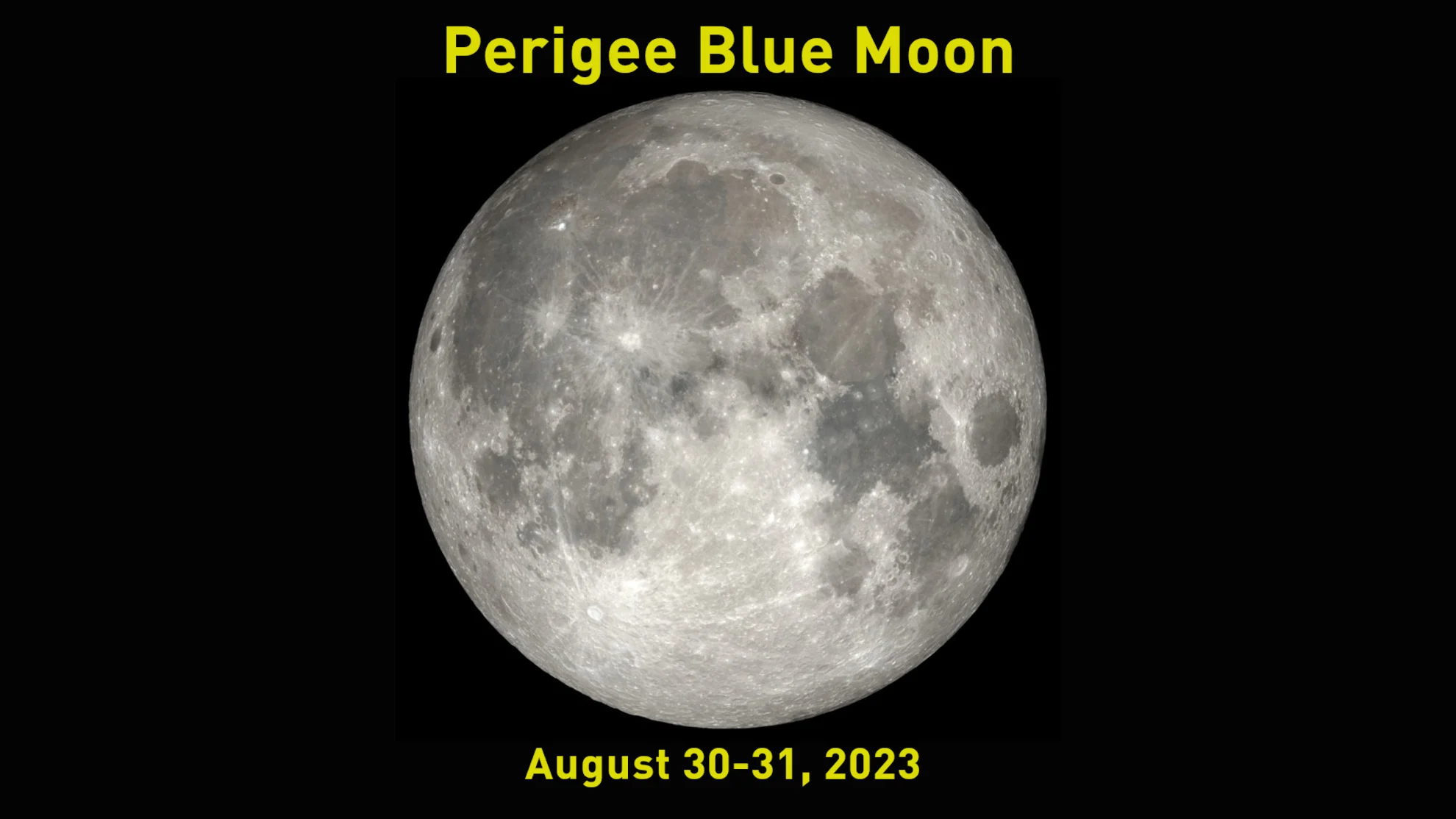
Eyes to the sky tonight to see the super-rare Perigee Blue Moon
We haven't seen a Full Moon like this one in over 27 years, and we won't see another one until the 22nd century!
2023 has a "bonus" Full Moon and it rises on the night of Wednesday, August 30.
In any given calendar year, there are typically 12 Full Moons — one occurring in each month. Every once in awhile, though, due to the exact timing of when the Full Moons occur, we get an extra one. That means we have a total of 13 Full Moons for the year, one during each of 11 months, and one month with two.
MUST SEE: The rare blue supermoon could worsen Hurricane Idalia's impact on Florida
Since we only have 12 popular names for the Full Moons, the extra one goes nameless. Thus we call it a Blue Moon.
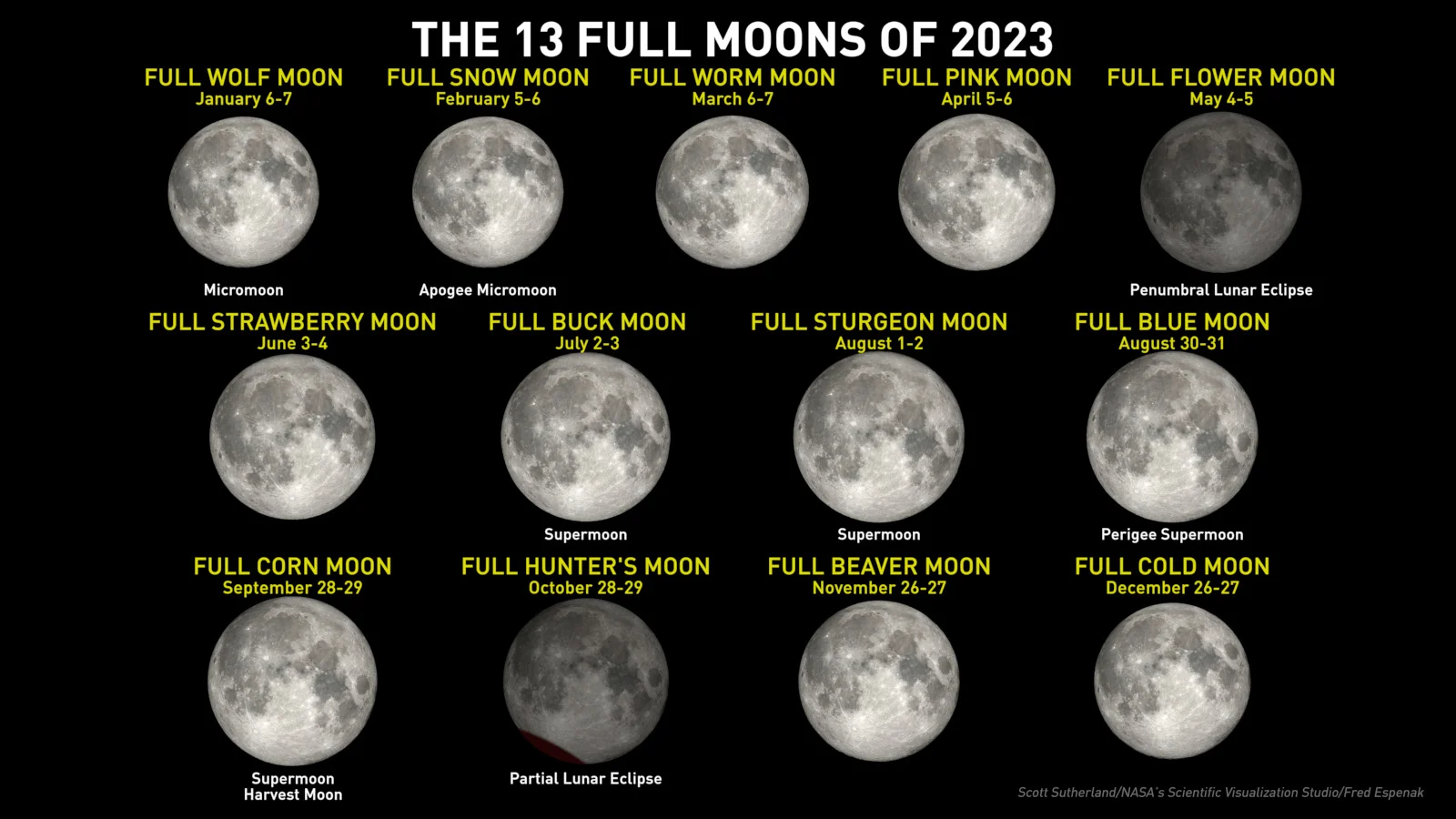
The 13 Full Moons of 2023, including their popular names and any other notable facts — supermoons, micromoons, lunar eclipses, etc. Credit: Scott Sutherland/NASA GSFC, with data from Fred Espenak.
Blue Moons aren't very rare on their own. Typically, they happen about once every two-and-a-half to three years. The last one was the Halloween Blue Moon on October 31, 2020. However, once in awhile there's a special year when we get two, like in 2018, when there were Blue Moons on January 31 and March 31 (with no Full Moon in February that year). The next Blue Moon will be on May 31, 2026, although, there is a different kind of Blue Moon before then. Read on to learn more.

This screenshot from a NASA video reveals the rarity of a Halloween Blue Moon. Credit: Science at NASA
Now, 'super' Blue Moons are a little more uncommon.
A supermoon occurs when the Moon turns full at the same time that it is near its closest distance to Earth along its elliptical orbit. Thus, being closer to us, supermoons appear bigger and brighter in the sky. Since we see between two and five supermoons each year, it doesn't take too long for one to match up with the second Full Moon in a calendar month. The last blue supermoon was a little over 5 years ago, on January 31, 2018, which was also a total lunar eclipse (the Super Blue Blood Moon). The next one doesn't occur until January 31, 2037, which — strangely enough — will be another Super Blue Blood Moon!
Tonight's Blue Moon is an especially rare one, though. It's a Perigee Blue Moon.
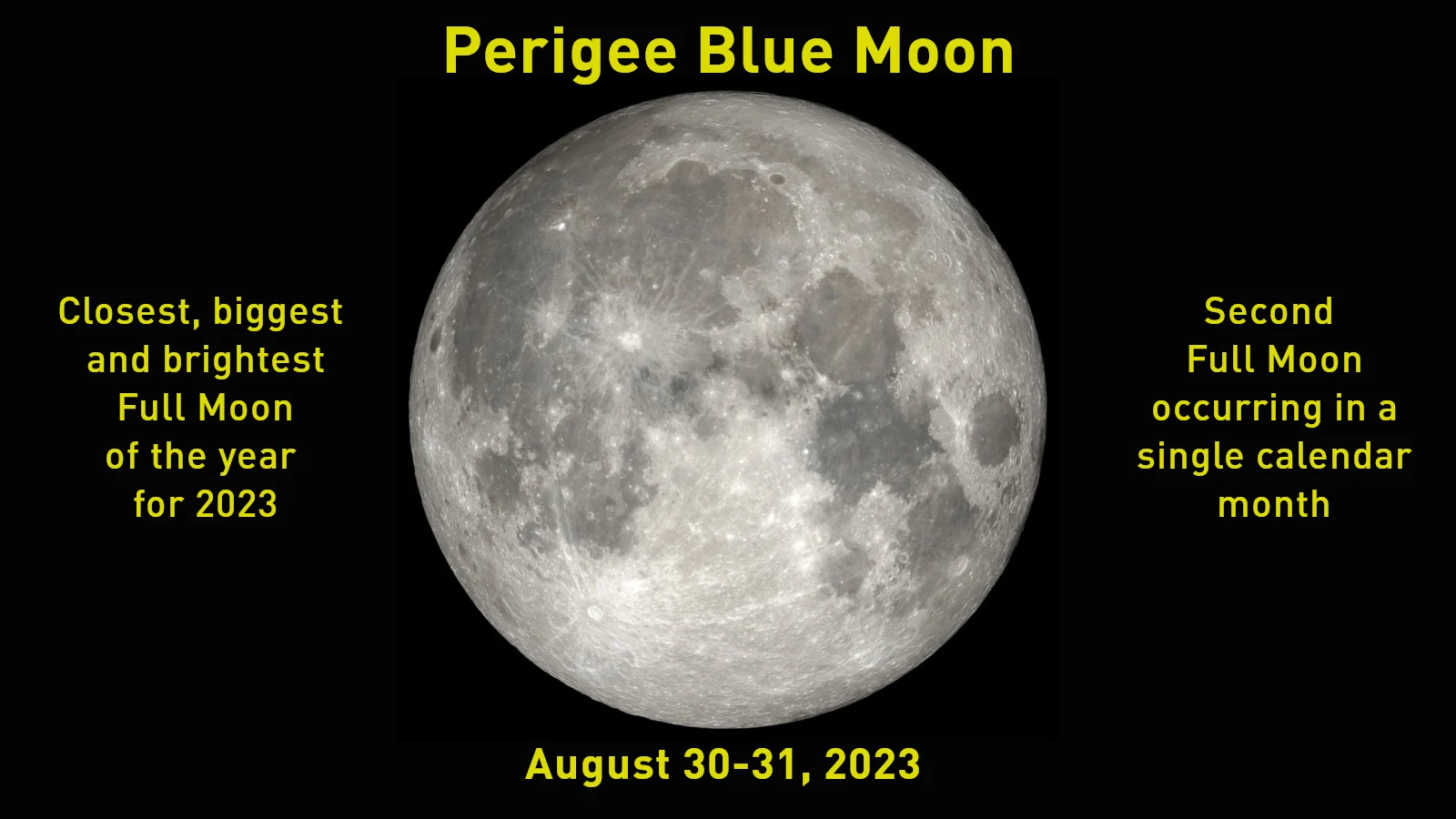
Credit: Scott Sutherland/NASA GSFC, with data from Fred Espenak
Of the handful of supermoons we see each year, one is always the closest, biggest and brightest of them all. It's the 'superest' of the supermoons, if you will. This is known as the Perigee Supermoon or Perigee Moon.
There's one Perigee Moon every year, and they're spaced apart by around thirteen and a half months. Match this up with the roughly 30-36 months between calendar Blue Moons and the variations in timing make Perigee Blue Moons quite rare.
It's been over 27 years since the last Perigee Blue Moon, which occurred on July 30, 1996. The next one, though, isn't until December 31, 2115. That's over 92 years from now!
So, be sure to get out to see this one, since there's an awfully long wait until the next one!
WATCH: When to catch meteor showers and Full Moons this month
--
READ MORE: How to get the most out of meteor showers and other night sky events
--
The OTHER kind of Blue Moon
Up until now, everything we've discussed has been about 'calendar' Blue Moons.
There's another kind, though. It's called a 'seasonal' Blue Moon, which is the third Full Moon in a season with four Full Moons.
Normally, there are three Full Moons in a season. However, if there's a Full Moon within the first few days of the start of a season, there's a good chance that we're going to see four Full Moons before that season ends. The third of those four is called the Blue Moon.
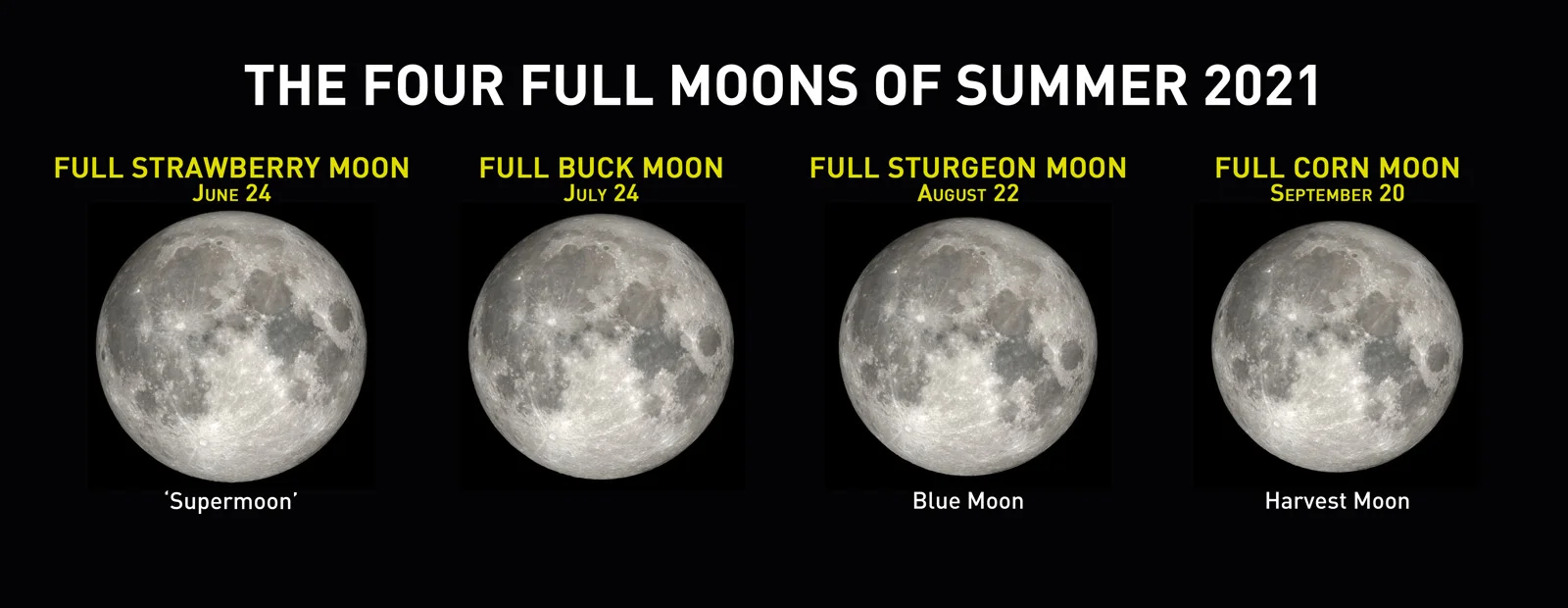
The four Full Moons of the summer of 2021, including the August 22 Blue Sturgeon Moon. Credit: Scott Sutherland/NASA GSFC, with data from Fred Espenak
This is apparently the traditional meaning of the term, first recorded in the Maine Farmer's Almanac in the 19th century. While a calendar Blue Moon occurs when there are 13 Full Moons during a calendar year (Jan. 1 to Dec. 31), a seasonal Blue Moon happens when there are 13 Full Moons during the course of four full consecutive seasons (aka the 'tropical year', such as from winter solstice to winter solstice).
The second definition has been traced back to an article that appeared in the March 1946 issue of Sky and Telescope magazine. The author, amateur astronomer James Hugh Pruett, was describing Blue Moons and appeared to misinterpret the Maine Farmer's Almanac, making the assumption that their definition used the calendar year rather than the tropical. Since it was easy enough to confirm that there were, indeed, years where we had 13 Full Moons during a calendar year, it appeared to make sense. Pruett's mistake was then repeated in a 1980 episode of the radio program Star Date, it appeared as a question in the 1986 "Genus II edition" of the game Trivial Pursuit, and other sources as well.
"The May 1988 double full moon really lifted the term off the ground by the interest of wire services feeding it to newspapers, radio stations and television newsrooms all over North America , and perhaps the world," Philip Hiscock, an Archivist at the Memorial University of Newfoundland Folklore and Language Archive, wrote back in 1999.

The last May seasonal Blue Moon was in 2019. Credit: Scott Sutherland/NASA GSFC, with data from Fred Espenak
Whether you prefer calendar or seasonal Blue Moons, both occur at roughly the same frequency, although in different years. Following the October 31, 2020 calendar Blue Moon, the August 22, 2021 Sturgeon Moon was a seasonal Blue Moon. After the August 30-31, 2023 calendar Blue Moon, the August 19, 2024 Sturgeon Moon will also be a seasonal Blue Moon.
When will we see the next Perigee seasonal Blue Moon? It won't as long as of a wait compared to the next Perigee calendar Blue Moon. Combining data from Fourmilab's Lunar Perigee and Apogee Calculator with retired NASA scientist Fred Espenak's list of supermoons and timeanddate.com's seasonal dates, it will apparently occur on August 21, 2032.
It may seem unusual that every seasonal Blue Moon mentioned here occurs in August, but these can only occur in one of four months of the year — February, May, August, or November.
--
READ MORE: What is the mysterious Moon Illusion?
--
The rarest of Blue Moons
There is one type of Blue Moon that is apparently the rarest of all — a February Blue Moon.
The length of time between two Full Moons, called a synodic month, is roughly 29.5 days. So, due to February being 28 days long, you will never see a February calendar Blue Moon. Even during a leap year, when February is 29 days long, the timing still doesn't work out.
However, there can be a seasonal February Blue Moon. There's a catch, though, which makes them extremely rare.
For there to be a seasonal Blue Moon, your season has to be longer than 88.5 days (three 'synodic months'). This is typically no problem for spring (93 days), summer (94 days), and fall (90 days). You can fit four Full Moons into those seasons reasonably well, as long the first Full Moon of the season occurs right after the season starts.
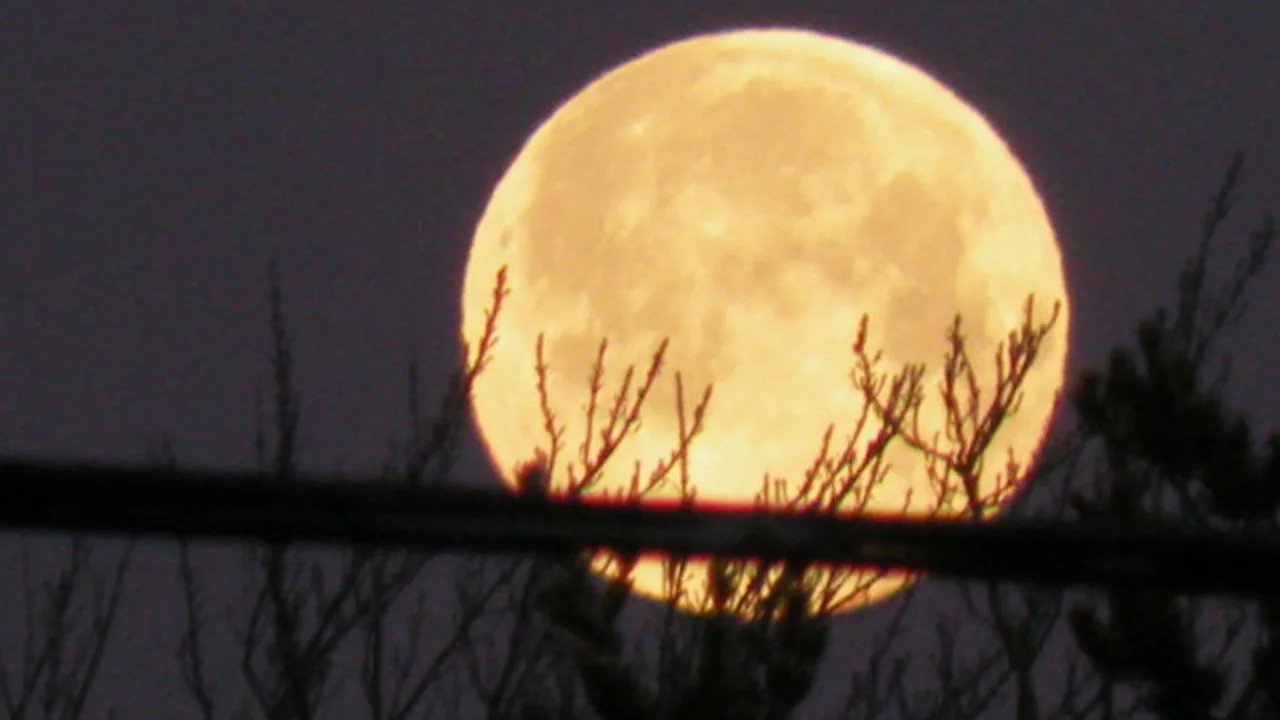
This image of February 2020's February Full Snow Moon was uploaded it into the Weather Network's UGC Gallery. Credit: Darlene MacLeod Smith
February Blue Moons would happen in winter, though, a season which tends to only have 89 days! With so little wiggle room, to see a February Blue Moon, the first Full Moon of winter would need to occur within just a few hours of the solstice.
To see just how close this is, the last February seasonal Blue Moon was in the year 2000. The first Full Moon of that winter was on December 22, 1999, at 17:33 UTC, roughly 10 hours after the December solstice (Dec 22, 2999, at 7:44 UTC). Full Moons followed on January 21, February 19 (the Blue Moon), and March 20 at 4:45 UTC, with the season ending about three hours later (7:35 UTC).
Due to the errors involved with calculating seasons so far ahead into the future, this may be incorrect, but the next February Blue Moon appears to be on February 19, 2258. The first Full Moon of that winter (Dec. 22, 2257, at 4:22 UTC) occurs about six hours after the start of the season (Dec 21, 2257, at 22:32 UTC), and the last Full Moon (Mar. 20, at 12:17 UTC) occurs about eight hours before the season ends (Mar. 20, at 20:10 UTC).
That's a wait of 258 years, and according to Fred Espenak's calculations, it should be a Perigee Blue Moon, too!
(Thumbnail image courtesy NASA's Goddard Scientific Visualization Studio)






